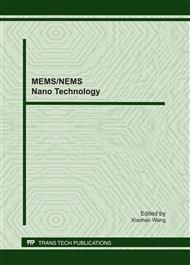p.471
p.475
p.481
p.487
p.492
p.497
p.503
p.508
p.513
Designing Experiment Platform for Micro Heat Exchangers
Abstract:
Micro heat exchanger, with its advantages such as small volume, light weight, high efficiency etc. has an increasing demand of market needs and applications. To evaluate the performance of a particular micro heat exchanger, this paper provides a novel platform for testing and inspection. Four sections are involved including the working principle of the experiment platform, component parts and arrangement, experiment and the data analysis. As for the hardware, precision instruments such as pressure gauge, flow meter and temperature sensors are utilized in the experiment in the data acquisition section. While for the software aspect, data acquisition and processing system based on the Visual Basic is applied in this experiment. The effect of the platform for micro heat exchanger is supported by the results of the testing .
Info:
Periodical:
Pages:
492-496
Citation:
Online since:
June 2011
Authors:
Price:
Сopyright:
© 2011 Trans Tech Publications Ltd. All Rights Reserved
Share:
Citation:


